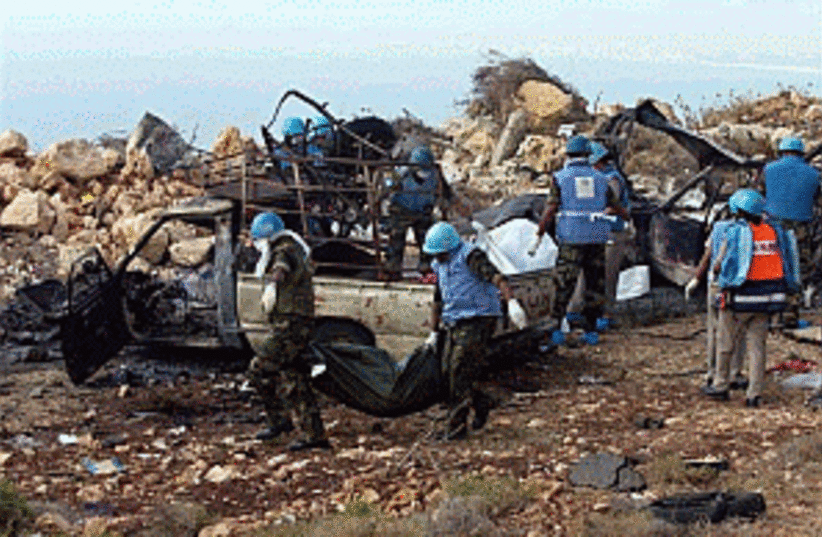IDF sources said 30-40 Hizbullah gunmen were killed during the combat.
Late Thursday, IAF pilot Maj. Ran Yehoshua Kochava, 37, was killed and three other pilots were injured - one critically, one moderately and one lightly - when two IAF Apache attack helicopters crashed near the Israel-Lebanon border.
Kochava's funeral was scheduled for 3 p.m. at Beit Hananya, where he lived.
The officers were set to carry out an operation over Lebanon and it appeared that the helicopters collided on the way, near Ramot Naftali, some 5 kilometers from the border. Witnesses said that one helicopter avoided crashing within the moshav, while the other tried unsuccessfully to execute an emergency landing, Army Radio reported.
IAF commander Maj.-Gen. Eliezer Shkedy has ordered an investigation into the circumstances of the crash but IDF sources stressed that the collision was not a result of enemy fire from Lebanon.
The IAF has conducted over 3000 sorties over Lebanon since Operation Changing Direction commenced last Wednesday.
A high-ranking IDF officer said the difficulties troops encountered in the fighting on Thursday could prompt a larger-scale ground offensive into southern Lebanon.
OC Northern Command Maj.-Gen. Udi Adam said that the army needed weeks to meet its goal of significantly impairing Hizbullah's ability to launch attacks against Israel.
"We need several more weeks," Adam told 
